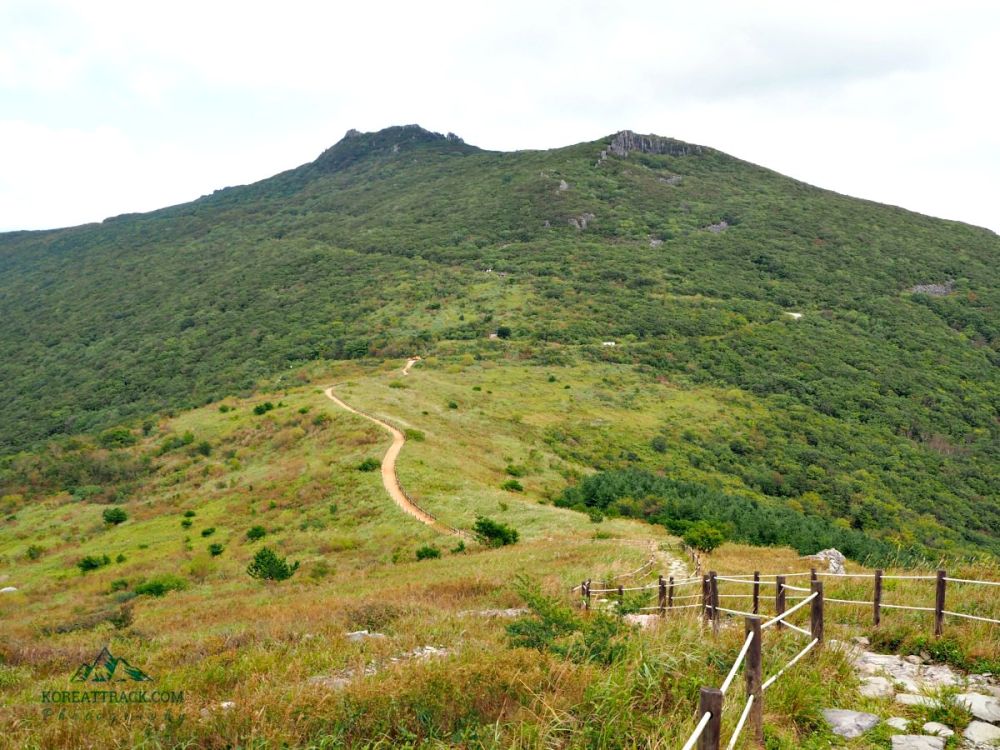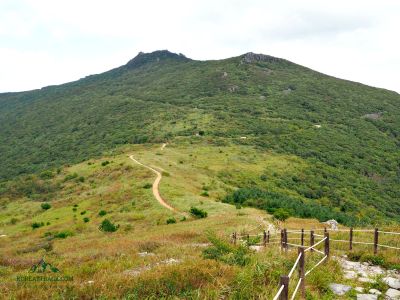

Mudeungsan National Park is renowned for its stunning ridges and peaks, and the Jangbuljae Ridge offers one of the most scenic hikes. This hike takes you through a beautiful forest and over the park's iconic rocky ridges. As you ascend, you'll pass by several natural and historical sights, including Buddhist temples and stone pagodas. Upon reaching the ridge, hikers are rewarded with panoramic views of the surrounding landscape and the city of Gwangju below. It's not only a physical journey but also a spiritual one, as the park is considered a place of deep historical and cultural significance. Safety measures are in place on the trails, but it's still essential to prepare adequately with proper gear and water, especially since the hike can be quite challenging for beginners.
The Soswaewon Garden is a traditional Korean garden that exemplifies the beauty of Korean landscape design. It lies at the foot of Mudeungsan and provides visitors with a tranquil environment that blends architecture, nature, and poetry. This Confucian scholar's garden is nestled amongst bamboo groves and is characterized by its harmonious arrangement of ponds, pavilions, and stone bridges. A visit here offers a peaceful retreat where you can learn about the Joseon Dynasty's aesthetics, culture, and the scholars who once sought refuge in the beauty of the garden. Visitors typically spend time reflecting on the serene atmosphere or exploring the garden's pathways to discover hidden corners and picturesque views ideal for meditation or quiet contemplation.
For those seeking an adrenaline rush, rock climbing at Seoseokdae offers an exhilarating challenge. Seoseokdae is a set of spectacular rock formations that create natural climbing routes with varying levels of difficulty. Climbers are met with incredible views of the national park as they ascend these ancient rocks. Safety is a top priority, so whether you are a seasoned climber or trying it for the first time, you're encouraged to go with an experienced guide who can provide equipment and guidance. The stark beauty of the rock surfaces against the lush backdrop of Mudeungsan's flora creates a memorable and photogenic climbing experience, perfect for adventurers looking to document their South Korean expedition.
Gwangjuho Lake Eco Park is an ecological sanctuary on the outskirts of Mudeungsan National Park. This expansive park includes wetlands, forests, and the stunning Gwangjuho Lake. A visit here could involve leisurely walks along the lake, bird-watching, or learning about the local ecology at the visitor center. The park boasts a diverse range of flora and fauna, including some rare species. Paddle boats and bicycles are available for rent, allowing visitors to explore the park from different perspectives. The Eco Park not only provides recreational activities but also serves as an educational experience about the importance of environmental conservation in preserving natural habitats for future generations.
Located within Mudeungsan National Park, Wonhyosa Temple is a place of spiritual significance and a popular destination for pilgrims and visitors alike. The journey to the temple is as appealing as the destination, with paths winding through serene forests and past scenic streams. The temple itself is steeped in history, featuring traditional architecture and several Buddhist relics. The atmosphere at Wonhyo's hermitage invites contemplation and offers an insightful look into the practice of Korean Buddhism. Occasional temple stays are available, allowing participants to experience monastic life, including meditation, chanting, and tea ceremonies with the temple's monks. This cultural experience is both humbling and enlightening, highlighting the tranquility and introspection one can find in Mudeungsan National Park.
Jeungsimsa Temple is another cultural treasure situated in Mudeungsan National Park, known for its picturesque setting that excites professional and amateur photographers alike. Established during the Silla Dynasty, the temple exhibits beautiful Buddhist art and vibrant lotus ponds that make for a photographer's paradise, especially during the spring and fall seasons when the foliage is most resplendent. Photography enthusiasts often participate in workshops or photo walks to learn how to capture the serene beauty of the temple and its surroundings. The experience is not only about taking home stunning photos but also appreciating the coexistence of nature and spirituality in Korean culture.
For those who prefer a faster pace, mountain biking through Mudeungsan National Park's trails provides a thrilling way to see the park's diverse ecosystems. Mountain biking routes vary from easy to challenging, catering to different skill levels. The park's trails offer an opportunity to cycle through forests, past streams, and along mountain ridges with the wind in your hair and the sounds of nature in your ears. Bikes are available for rent near park entrances, and guided tours can enhance the experience, offering insights into the park's ecology and ensuring you don't miss the most scenic spots. Always remember to follow park guidelines to help preserve the natural environment for other visitors.
Daecheongbong Peak, the highest point in Mudeungsan National Park, is an idyllic spot for a picnic with its breathtaking views. Visitors can hike to the peak and find a suitable area to relax and enjoy a meal amidst the beauty of the South Korean wilderness. The peak provides sweeping vistas that are particularly magical at sunrise or sunset, making it an essential experience for any visitor. Picnicking at Daecheongbong Peak allows you to take a break from the rigors of hiking and savor both your food and the natural splendor around you. Pack a blanket, some traditional Korean snacks, and perhaps a thermos of warm tea for the ultimate mountaintop dining experience.
Every spring, Mudeungsan National Park becomes home to the Mudeungsan Wildflower Festival. The event celebrates the burst of colors from wildflowers blooming across the park's landscape. Visitors can walk among fields of azaleas, forsythias, and other indigenous flowers while learning about the species native to the Korean peninsula. Guided flower tours, photography contests, and educational booths add depth to the experience, allowing visitors to immerse themselves in the botanical beauty while understanding the ecological importance of the region's flora. The festival offers fun for families and is a perfect occasion for nature enthusiasts and those looking to experience local culture and tradition.
Geumseongsanseong Fortress is an ancient mountain fortress dating back to the Baekje Kingdom, offering a mix of cultural history and physical activity. Situated within Mudeungsan National Park, the fortress features well-preserved walls and gates that once served to protect the kingdom from invasion. Visitors can explore the fortress ruins by walking along the old stone walls that provide a vantage point for incredible views of the valley and mountainside. Informational signs along the way explain the history and strategic importance of the fortress. This is an ideal activity for those interested in South Korea's rich past and for those who want to combine a workout with an educational experience.
